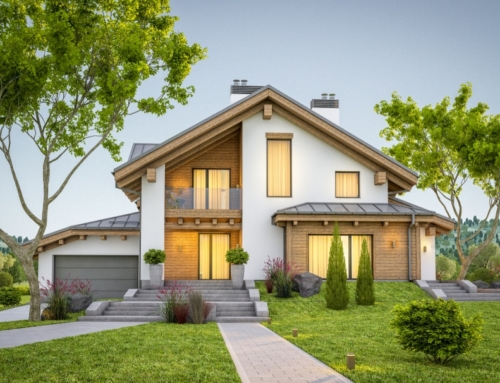Walk into a model home and everything looks perfect. Rooms are organized so that traffic flows easily from one room to another. The decor matches and the entire house feels as though it works seamlessly.
Well, it should. Builders often spend several hundred thousand dollars outfitting a model home with all the bells and whistles. Upgraded tile, stone and carpet are used. Fancy wallpaper or hand-painted wall finishes add a certain “Je ne sais quoi.” And don’t forget the details, down to the place settings on the dining room table.
The developer wants you to feel enough at home that you’re willing to plunk down 10 percent and sign a purchase contract.
A well-designed model home will give each room a stated purpose. There is the office, typically finished with dark wood trim, a large, study desk and big chair. The table in the eat-in kitchen will be just the right size. And, there’s typically no mistaking who belongs in each of the bedrooms.
The problem is that only one customer will be able to buy the model home — and the furnishings are extra. But for everyone else, figuring out how to make the most of each room when you’re buying new construction requires a tremendous amount of thought before you even sign the contract.
The biggest mistake new construction buyers make is not taking time to imagine how they’re going to live in their new home. Some housing experts argue that it’s tough to know how you’re going to live in a house until you actually live there a Catch-22. The trick is to spend time thinking about how you live in your current home, and then apply that to the different parts of the new house.
Le’s start with food: Prepping it, eating it and serving it. Will you eat all your meals in the dining room? Or are you more of a kitchen table kind of family? Or do you want to have a big countertop with some stools so you can feed the kids while cooking a later dinner for you and your spouse.
Do you like to entertain? While many home buyers want a separate dining room, it’s a room that’s used, at most, just a handful of times during the year. Typically, holidays are the times when formal meals are served.
But if you regularly have company, you may want a more formal space in which to entertain your family, friends or work colleagues. One woman recently doubled the size of her formal dining room and created a raised, tray ceiling, in order to have enough space to seat 14 comfortably. She built her house just five years ago.
“I realized that when we entertained, we were always squeezing people in and it was uncomfortable,” she said. “But my husband is the one who really wanted a room he could sit down at with his business associates and friends.”
The master bath is another place where home buyers often make mistakes. Couples who share space in their current residence assume they won’t mind sharing space in their newly-built home. Once they get into the space, however, they realize they’d actually prefer to have their own private bathroom, not to mention separate, but equal, walk-in closets.
If you’re the kind of family that often has out-of-town visitors, it makes sense to figure out where everyone will sleep when they come to visit. If you can, try to set aside a room with an attached bathroom, or one that is right next door, for your guests.
While the room might have to double as a home office during the week, think about the comfort of your guests before you build. Will you have a bed in the room at all times, or will you install a high-quality Murphy bed that will give your guests a solid night of sleep?
And finally, think about how you cook and live in your kitchen before you design it. Think about how much stuff you have and where you’re going to store it. Planning out where your grandmother’s mixing bowls will go sounds like a lot of work, but it will just make unpacking a lot easier.






Leave A Comment